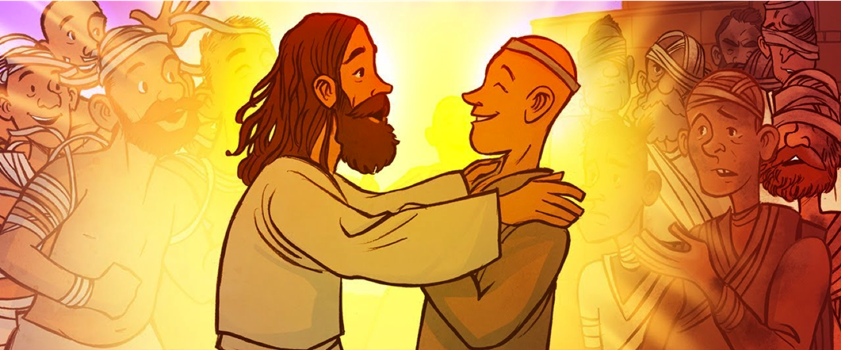
The story of the ten lepers in the Gospel of St Luke brought to mind
the wooden box carts, in which lepers were pushed by their fellow sufferers, begging for alms at the traffic lights in Bangalore. We would roll down the windows of the car and gingerly drop coins into their fingerless palms, feeling pity wash over us, seeing their noseless and deformed faces. In the past, people infected with the skin disease called Leprosy were treated as outcasts. There was no cure for the disease at the time, and it gradually left a person disfigured through the loss of fingers, toes and eventually limbs.
Those who had contracted leprosy, had to leave their homes and families and live together with others with the disease on the outskirts of the town. They could not work and therefore, would have to scavenge for food.
Since they were forbidden to have any contact with people who did not have the disease, they had to ring a bell and shout ‘unclean’ if anyone approached them. Of course they could not go to the shopping areas and were forbidden to attend any sort of religious service with other members of the population.
If anyone had a skin disease from which they were cured (which was unlikely in the case of leprosy), Jewish Law stated they could not re-enter society unless they first went to the priest to be checked before receiving a certificate to say they were now ‘clean’. Sounds a bit like the Covid pandemic we have just been through and the fear of infecting one another, hence the masks firmly in place and we have to produce certificates proving that we have been vaccinated—not once or twice but three times with the booster jab.
Going into the history of the region, it’s interesting to know that Palestine was divided into three regions: Galilee, Judea and Samaria. The Jews hated the inhabitants of Samaria who were known as the Samaritans. In the past, their ancestors had married foreign invaders from a non-Jewish background. Since then, the Samaritans were treated as an inferior race as they were not ‘pure’ Jews.
According to the Gospel of St Luke, on the way to Jerusalem Jesus was going through the region between Samaria and Galilee. And as the story goes—as he entered a village, 10 lepers approached him, and keeping their distance, they called out, saying, ‘Jesus, Master, have mercy on us! The ten men with leprosy stood at a distance as they understood the law forbidding them to have contact with people who did not have the disease.
But what’s interesting to note is that Jesus does not immediately heal the lepers, but tests their faith by asking them to go first and meet the priests in the temple. As the story goes—Jesus heals them on the way there. However, it is only one of them who returns with gratitude
in his heart and who shows the most faith and thankfulness towards Jesus.
We do not know how many of the men were Samaritans, but it is significant that the only one to return was a Samaritan. Jesus commented, ‘Why is this foreigner the only one who came back to give thanks to God?’
This miracle shows Jesus’ attitude towards people who were marginalised by others in society. Jesus shows no prejudice between races towards the lepers and heals them as a group. But He does make it a point of praising the Samaritan for his faith.
This interesting story also alerts us to the fact that the 10 lepers, comprised of a group of people excluded from community life because of their medical condition and one leper was considered to have been doubly excluded, be- cause of his ethnicity as he was a Samaritan.
The lepers who were, ‘keeping their distance,’ call out to Jesus, not specifically to heal them but to ‘have mercy on us!’ Their call for mercy, though, indicates a desire to be healed of their affliction. When Jesus sees them, he sends them to the priests, who will determine whether they have been healed of the disease. What a marvelous gift for the men to find themselves suddenly ‘cleansed’ and whole again, while on their way to meet the priests.
But sadly only the Samaritan turns back to praise Jesus and fall at his feet and thank him. Jesus asks them curiously, ‘Were not 10 made clean? But the other nine, where are they? Were none of them found to return and give praise to God except this foreigner?’ This line of questioning by Jesus is not for the missing nine or the Samaritan, but probably for Jesus’ disciples and curious onlookers. How many of us ask of a favour and then forget to thank our benefactor once it’s achieved?
The boundary lines between who might be saved, leper or clean, Samaritan or Jew, have been breached by Jesus. The Samaritan’s return gives Jesus the opportunity to demonstrate that no one, not a leper, nor a Samaritan, is beyond God’s mercy. Anyone can experience God’s salvation and shout with joy and praise God for it and then try to walk along the same road that Jesus is traveling, spreading the good word.
∎